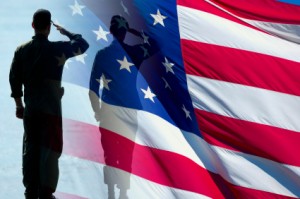 Wars have always brought about significant improvements in medicine that also affect the civilian population. An ancient therapy is now being added to the higher tech treatments and medications currently used. The Army will use acupuncture as a pain treatment at several military bases in the U.S. and at Landstuhl Medical Center in Germany.
Wars have always brought about significant improvements in medicine that also affect the civilian population. An ancient therapy is now being added to the higher tech treatments and medications currently used. The Army will use acupuncture as a pain treatment at several military bases in the U.S. and at Landstuhl Medical Center in Germany.
The goal is to provide a comprehensive, holistic approach to pain treatment for military personnel who served in the Iraq and Afghanistan conflicts. Acupuncturists are being hired to practice alongside a team of physicians, pharmacists, massage, physical, occupational and movement therapists. The acupuncturists will work at the Interdisciplinary Pain Management Centers on the bases. They will be using cupping, gua sha and moxibustion – other Oriental medicine modalities – in addition to acupuncture needling.
The Pain Management Task Force, formed in 2009 by the Army, included members from several branches of the military and the Veterans Health Administration (VHA). These members visited sites, collected data, and consulted with experts in pain medicine to develop 109 recommendations (3.7MB PDF) for comprehensive pain treatment. Acupuncture was placed as a Tier 1 (top tier) complementary therapy for pain.
One factor in the military’s decision to use complementary therapies has been the misuse of and dependence on pain medication – significant problems in the civilian population also. Acupuncture and the other therapies will not replace medications and other conventional pain management therapies. Rather, the complementary therapies will minimize medication use and provide more options for pain relief.
Acupuncture has been used for pain treatment in the field of war for the past 10 years, and will now be extended to post-acute care. The Army’s initiative in using acupuncture as an integrative pain treatment may lead to its use in more civilian hospitals. This is good news, not just for military service members dealing with the physical and emotional pain of war, but for chronic pain patients everywhere.